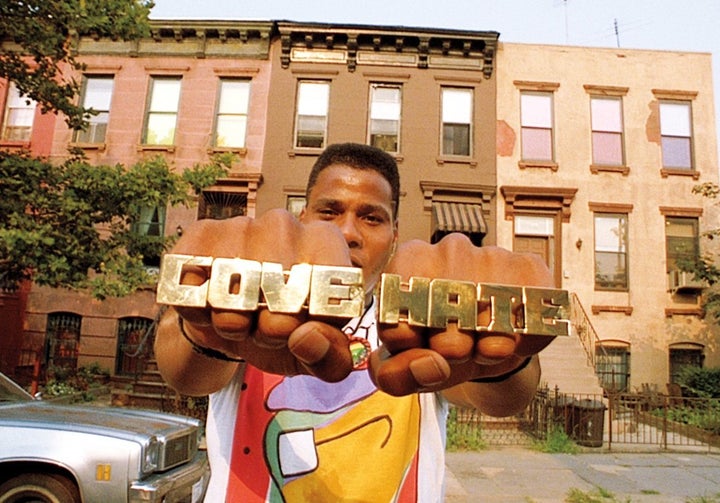
In the past 10 days or so we have a seen a spike in the number of hate filled events occurring in the streets, K-16 classrooms, school hallways and college dormitories. We are in an era of fear perhaps not seen in America since post-9/11. With this in mind, I think it is important that we create opportunities to express these issues in a public forum. I encourage everyone who reads this to please comment, and share. Let me be clear, I, by no means, am saying that I have answers to these complicated questions. I simply want to be a part of the dialogue that advances the discourse forward. Most importantly, I seek to be an ally to those without a voice, and those who feel fearful or alienated for being ‘other.’
In stark contrast to what many political pundits predicted, 53% of White females voted for the President-Elect. Additionally, current data shows that most of public school teachers in this country are White females. As an educator, one of my greatest concerns post 11/9 is how do K-16 students, especially students of color and those who have been otherwise ‘othered,’ feel safe in their classrooms.
For some, it is difficult to fathom that teachers could support a candidate who verbally espouses toxic hostility towards so many groups within our populace, but in reality is naïve for us to think otherwise. Throughout American history, public education has been the minefield that has highlighted many of our nation’s fatal flaws. However, as someone who strives to see the good, I also strongly believe that our nation’s schools have been the place of many of our biggest societal victories.
A few years ago, I taught an upper-level undergraduate course to pre-service teachers who were primarily White, female and in their early 20s. In many of our discussions centering on culture and diversity, tensions arose whenever their preconceived knowledge about culture and society was challenged, either by their peers, especially peers of color, or by myself. What was exceptionally perplexing was that many of the pre-service teachers thought the expression of philosophies centering culture and diversity were not age appropriate for the population of children they were being trained to teach (K-5).
It is of critical importance to emphasize that race is not the only variable that is relevant in creating spaces where issues of diversity and bias are discussed. “Diversity” is not a proxy (despite what some believe) for race. It is important to be clear that when discussing “diversity” that there is a fundamental acknowledgment that we are discussing the multitude of difference, culture, experiences, age, and the like that exists inside our classrooms and society.
In other words, diversity.
How can we reduce the type of venomous animus that is currently occurring? I believe that one way is to highlight the importance of teachers colleges, schools of education, and policy makers to strive to increase the number of teachers of color in the pipeline and in classrooms in every school district across the United States. Concurrently, we must also assist in instructing existing teachers, many again, of whom are White and female, in ways in which to become more culturally and socially aware and responsive to their students’ backgrounds, cultures, practices and experiences.
To this end, many teachers’ colleges across the country have already implemented diversity requirements for all of their students (Darling-Hammond, 2012; Emdin, 2016; Ladson-Billings, 1999). However, the range of this requirement could include a single one semester 3-credit course, to a total commitment to social justice and cultural diversity that permeates throughout every required course pre-service teachers take towards their credential. How many courses are available and who teaches those courses speaks volumes about the commitment of a particular college’s efforts to promote diversity as a meaningful goal.
In the wake of the current rise in tensions, it is important that we train K-16 teachers who are already in the classroom about diversity, anti-bias curriculum and culture. There are a variety of reasons that this training does not occur to the extent that it needs to occur, but the bottom line is that efforts to increase the importance and relevance of diversity and social justice needs to be at the forefront of not just pre-service teachers, but throughout K-16 school campuses of all types (public, private, and parochial). Administrators, and District officials can no longer hold their breath and pray that “this type of thing” doesn’t happen on their campuses.
Central to the training teachers need to engage in are two theoretical constructs – culturally relevant pedagogy (Ladson-Billings, 1995) and reality pedagogy (Emdin, 2016) that are essential to helping create avenues of dialogue and understanding that is so desperately needed.
It is important in this time of uncertainty, confusion misinformation and distrust that we as educators make sure we do not promote hate, misunderstanding, or division. We need to make sure that we are cognizant of and allow for spaces for students to express themselves, flesh through a positive acknowledgement of their differences and how the diversity of opinions is central to our democracy. As much as we want to as adults, we cannot stifle or censor these difficult discussions. Rather we need to be facilitators and mentors navigating our students through this difficult terrain and encouraging them. In this work it is essential that we as educators, confront our own biases as well as engage in our own level of self-care. We do not have to articulate our own political ideology, or promote a particular political party.
All we have to do is to promote love. I know it sounds naïve, but it really is that simple.
As the Black Eyed Peas sang in their song Where is the love (2003);
But if you only have love for your own race Then you only leave space to discriminate And to discriminate only generates hate And when you hate then you're bound to get irate, yeah.
Madness is what you demonstrate And that's exactly how anger works and operates Man, you gotta have love just to set it straight Take control of your mind and meditate Let your soul gravitate to the love, y'all, y'all.
People killin', people dyin' Children hurt and you hear them cryin' Can you practice what you preach? Or would you turn the other cheek?
Father, Father, Father help us Send some guidance from above 'Cause people got me, got me questionin' Where is the love (Love)?
